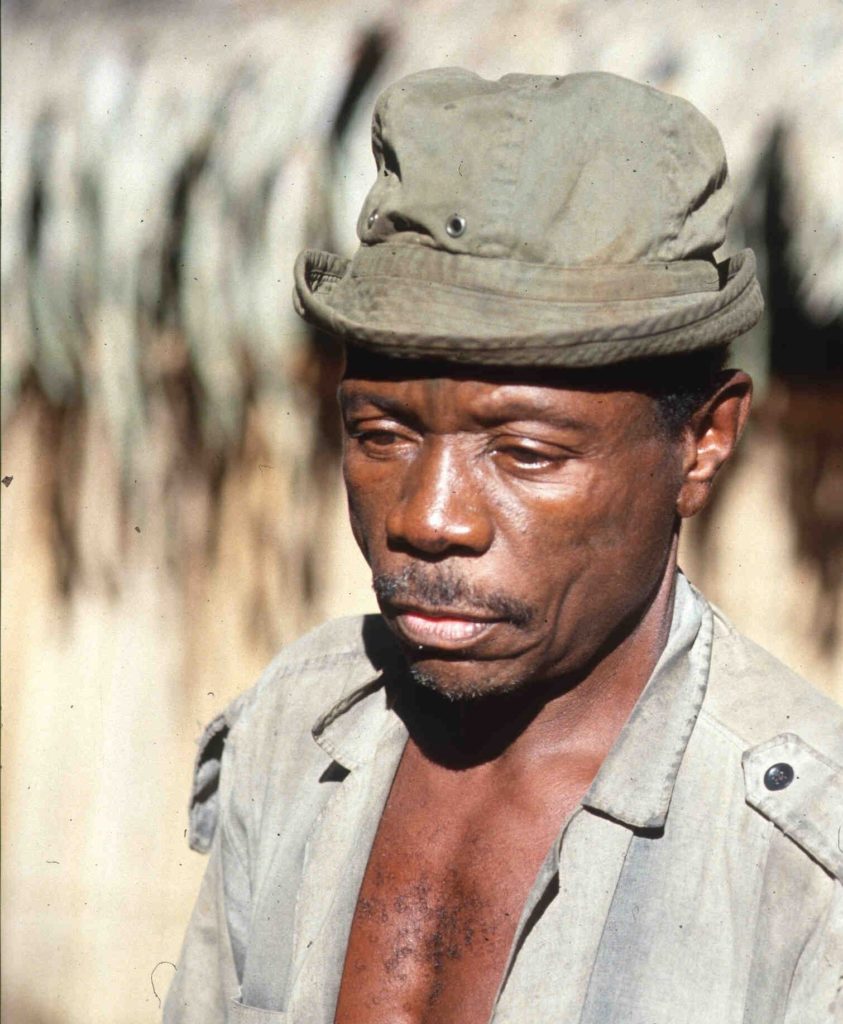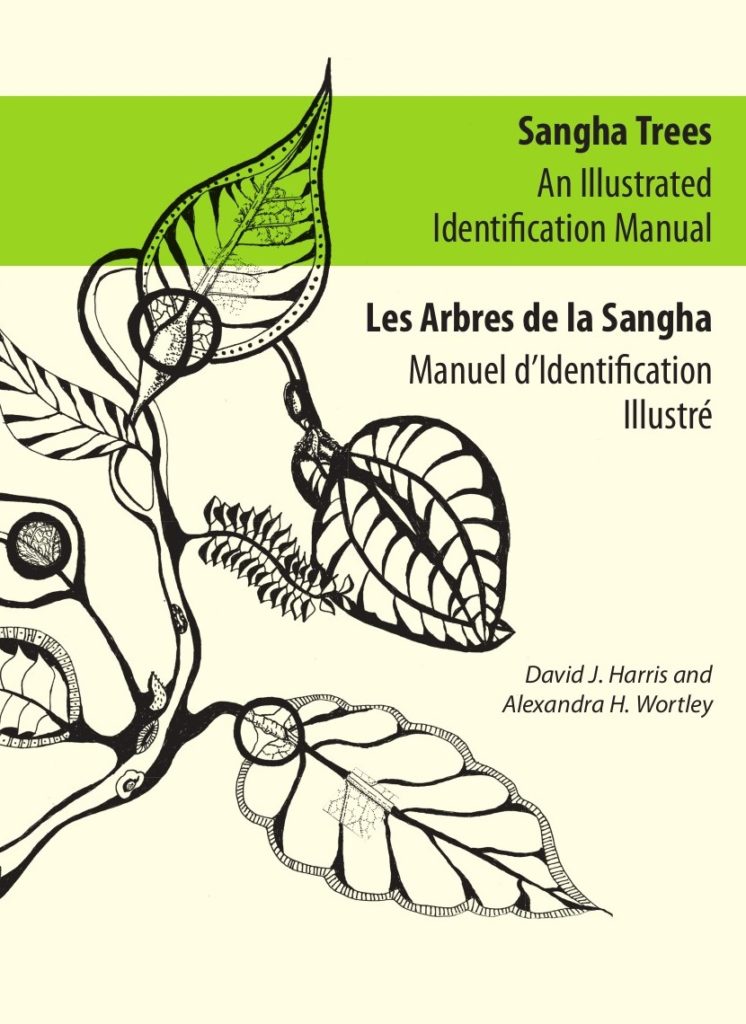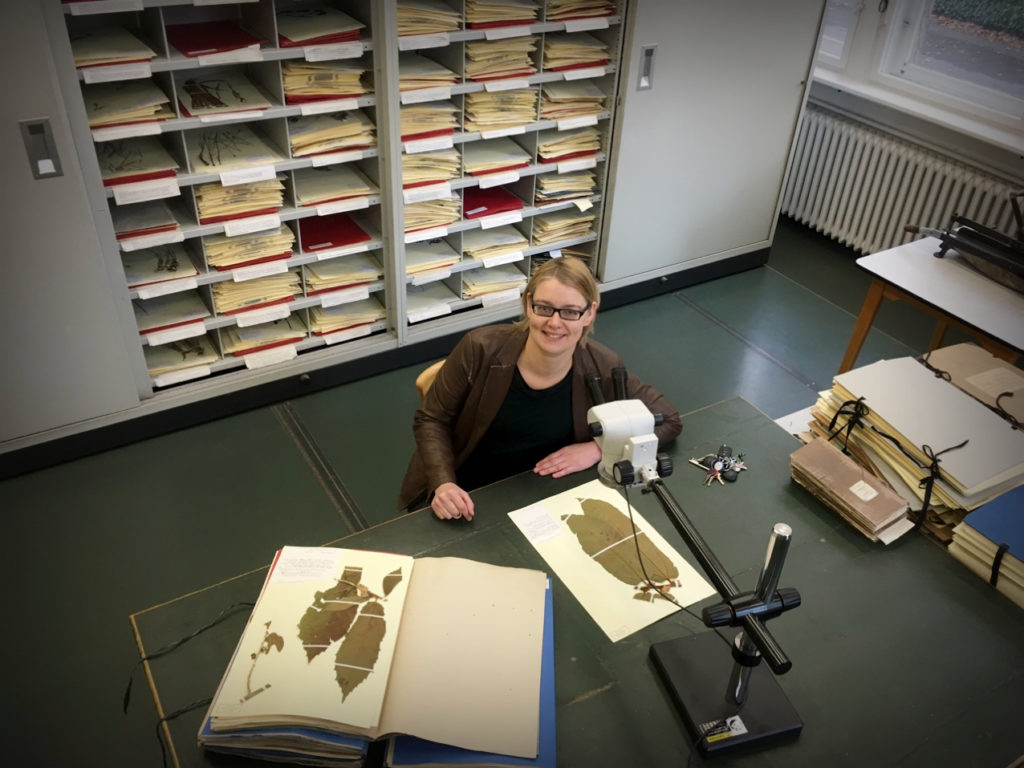In 1994 I was in a forest in the Central African Republic standing in front of a tree. I remember the moment well. I turned to my companion, Bakembe – part botanical wingman, part guru on forest living. He said “liambamba”. I picked up a fruit from the ground and glanced at him meaningfully and he repeated “liambamba – but different”. Muscles in my abdomen tightened and I got that feeling that I assume all taxonomists get when they realise they have something that is “the same but different”.

When we taxonomists see something that is the “same but different” it usually means we are onto something. It might be a new species; it might be a new character. It might just be variation within species – but when I get that physical reaction, it is usually something more important. That feeling I got in my gut is probably similar to how you feel when you met your partner’s parents for the first time – so similar, but, oh so different.
Back to 1994 and liambamba which is the name for the genus Desplatsia in my field assistant’s first language (Bambenjele). We had been working together, off-and-on since 1987, and we had collected and discussed three species of Desplatsia, which are small trees – in the same family as chocolate and cotton (Malvaceae) – growing across the forests of west and central Africa. I had keyed out these three species out in a regional Floras and I had Latin names for all three. But in those books I had with me in the Central African Republic there was no mention of a fourth species. I made a herbarium specimen of the tree of this fourth species of Desplatsia and asked Bakembe, my field assistant, to hold the fruit as I took a photograph of it. I knew I had something new or rare.

In 1998 I got a job at the botanics in Edinburgh. One of the first things I did was to go to the library and look for a Flora that I had not been able to consult in the field: Flore du Congo, du Rwanda et du Burundi (1963). Within a few minutes, I had a name for the fourth species – Desplatsia mildbraedii, only known at that time from a handful of collections from the Democratic Republic of Congo and Uganda. In the quiet of the RBGE library, exactly the same muscles tightened as they had in the forest. But in the books there were some doubts expressed about whether D. mildbraedii really was different from the more common D. dewevrei and I read that other Desplatsia names were being used as well in Gabon. I filed away those doubts.
In 2008 Alex and I decided that we had four species in the Sangha Trinational Area- a network of protected areas and World Heritage Site where Cameroon, Republic of Congo and the Central African Republic meet. Using funds from our Darwin Initiative grant we commissioned botanical artist Rosemary Wise to draw leaves of the four species of Desplatsia, including D mildbraedii for our book Sangha Trees (Harris & Wortley 2008

Fast forward to May 2018 – I proposed “A revision of Desplatsia” as an MSc project. Julia chose the project –and supervised by me, Peter and Michelle – did the revision. Julia worked through all the specimens that Bakembe and I had collected, read all the literature, including a 288 page German tome from 1923. We then spent a week going through all the Desplatsia specimens in the herbarium at Kew. Jan Wieringa, curator at the herbarium at Naturalis in Leiden, gave us a download of all the specimens databased from that institute. Meise Botanical Garden in Belgium did the same.

Julia was so thorough and keen to learn the whole processes of curation and taxonomy that she even mounted all the specimens of Desplatsia in my backlog in Edinburgh. Under Michelle’s careful eye, she extracted DNA from leaf material and sequenced Desplatsia species for three different regions. Peter checked her conservation assessments. The good news is that all four species are of least concern, although one reviewer challenged us on this in the peer review process and Julia had to explain our decision in her letter to the editor. She examined the type specimens to sort out the nomenclature, she wrote a key to distinguish the species, she wrote descriptions and she listed all the specimens. The revision is published in the European Journal of Taxonomy, you can read it here and download the data here.
So how many people does it take? There is a clue is in the title of a paper written by Sandy Knapp called “Taxonomy As A Team Sport”. Field assistant, guru, database curators, plant collectors, taxonomists, colleagues, student, artist, reviwers and editor. Revising even a small genus takes a lot of people.
References
Burret, Max (1926) Beiträge zur Kenntnis der Tiliaceen. Notizblatt Des Botanischen Gartens Und Museums Zu Berlin-Dahlem, 9, 592 – 880.
Harris, David J. & Wortley, Alexandra H. (2008) Sangha Trees. Royal Botanic Garden Edinburgh. 1-300.
Knapp, Sandra (2008) Taxonomy As a Team Sport. Systematic Association Special Volume 76: 33.
Wellsow, Julia; Hart, Michelle; Wilkie, Peter & Harris, David J. (2019) A Taxonomic Revision of the African Genus Desplatsia Bocq. (Malvaceae – Grewioideae). European Journal of Taxonomy. https://doi.org/10.5852/ejt.2019.584
Wilczek, Rudolf (1963) Tiliaceae. In Flore du Congo, du Rwanda et du Burundi, volume 10. 1-91.
